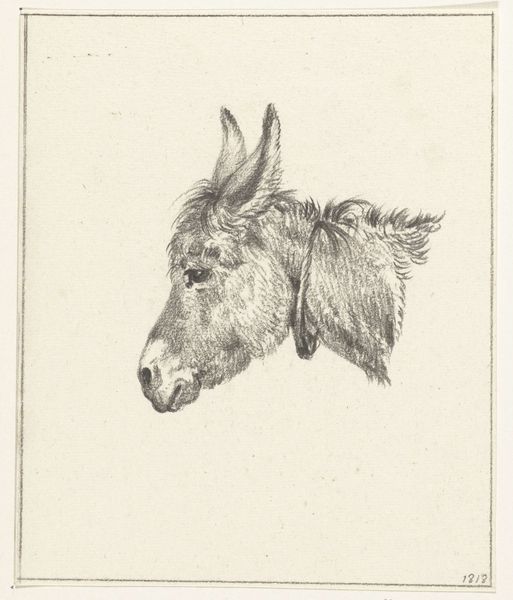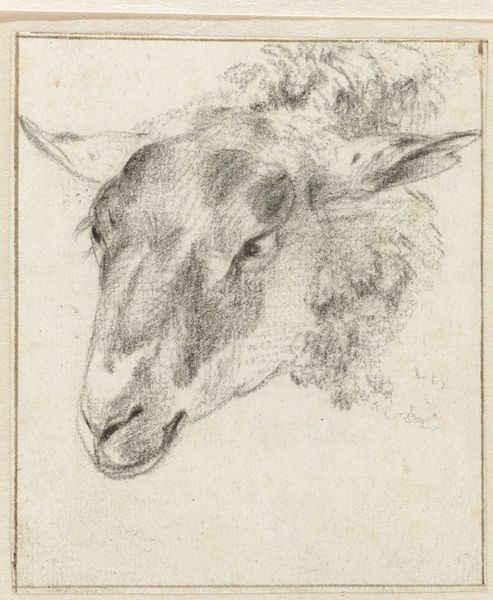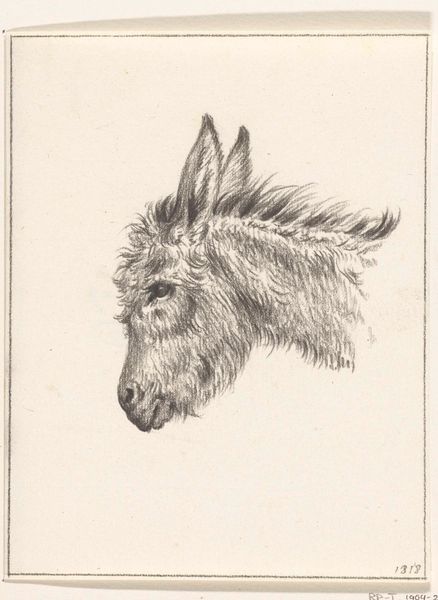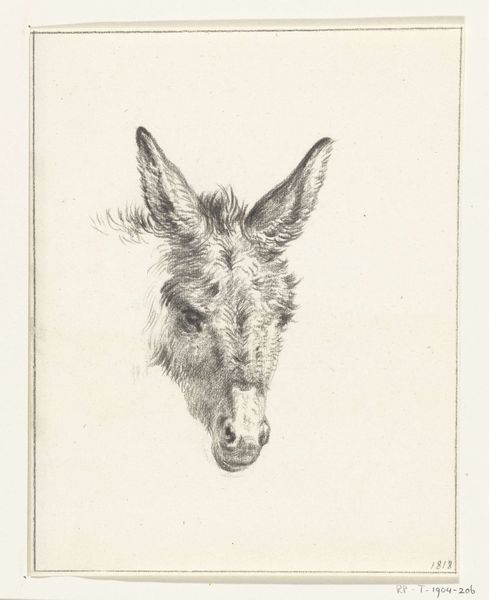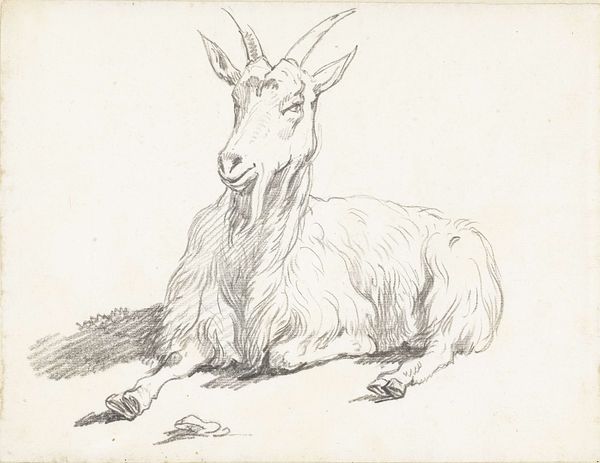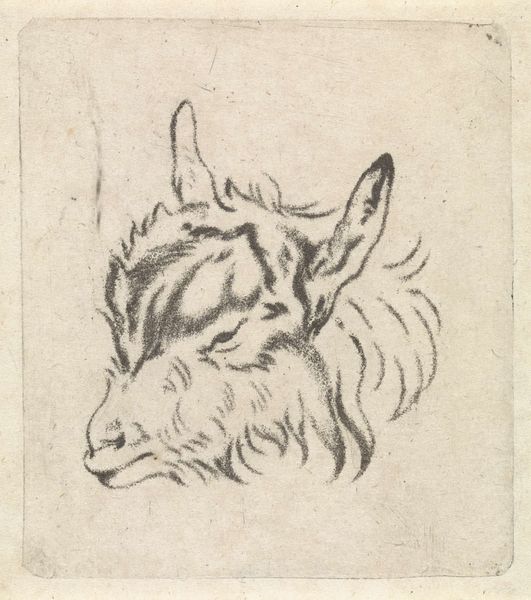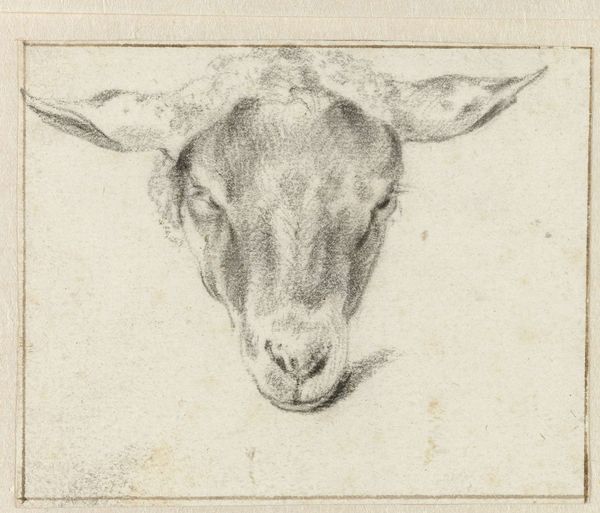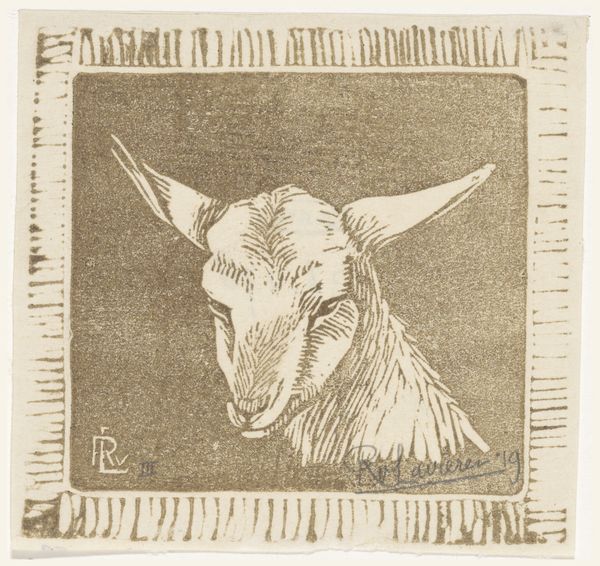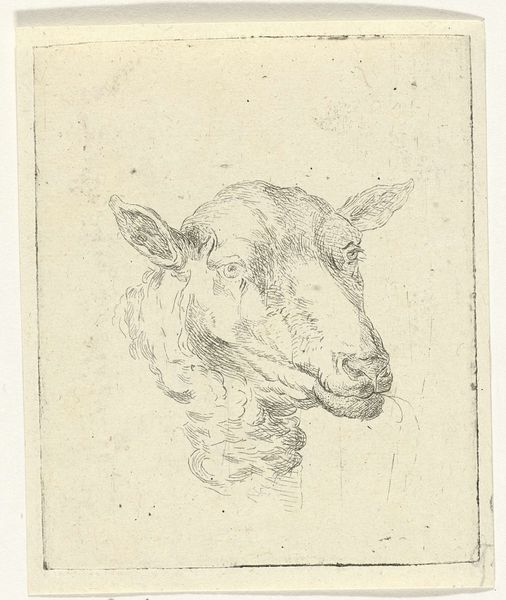
print, engraving
#
portrait
# print
#
old engraving style
#
personal sketchbook
#
line
#
sketchbook drawing
#
sketchbook art
#
engraving
Dimensions: height 70 mm, width 51 mm
Copyright: Rijks Museum: Open Domain
Pieter Janson created this etching titled 'Bokkenkop', depicting a goat's head, sometime before his death in 1851. In the Dutch Golden Age, animals frequently appeared in art, often laden with symbolic meaning. This work provides a window into 18th and 19th century Dutch society, where agriculture and animal husbandry were central to both the economy and cultural identity. The goat, a common animal, could symbolize a range of human traits: stubbornness, vitality, and even lust. By focusing solely on the animal's head, Janson encourages us to consider the essence of the creature. The etching technique, with its fine lines and tonal variations, captures the texture of the goat's hair and the character of its face. There is a certain intimacy in Janson's portrayal, a sense of connection between the artist and his subject. While seemingly simple, 'Bokkenkop' reflects a society grappling with its relationship to the natural world.
Comments
No comments
Be the first to comment and join the conversation on the ultimate creative platform.
